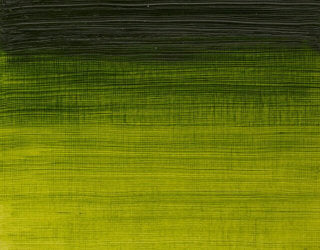A Brief History of Sap Green
 What is sap green?
What is sap green?
Sap green is a lake pigment and was originally made from the juice of unripe berries from the buckthorn (Rhamnus) plant. In medieval times the extracted colour was reduced to a heavy syrup and sold in pig bladders rather than a dry pigment.
A range of greens can be prepared from the berries – some were more successful than others. Since medieval colourists would not have had scientific analysis to help them understand which berries were best, they passed down knowledge about where buckthorn grew well, and what kind to use to produce the best quality colour.
How was it made?
The juice was pressed from the berry, mixed with an alum (a siccative, or drying, agent) and thickened by evaporation; binder was not added because of the natural thickening. This process yielded a transparent sticky green syrup that artists used in painting and illuminated manuscripts.
Modern formulations do not include buckthorn berries, but Winsor & Newton’s Sap Green is permanent and lightfast. The popularity of this yellow-green colour means that it can be found in our oil, acrylic, watercolour and gouache paint ranges.
The history of sap green
Sap green was recorded by the Italian painter Cennino Cennini (c.1360), who is remembered for having authored Il libro dell’arte, a ‘how to’ book on late Medieval and early Renaissance painting.
It‘s a remarkable documentation of the techniques and tricks of his time. He stated in the book that sap green would not last and he was right. The addition of alum did make the colour more durable, but not permanent by contemporary standards.
Despite its fugitive quality, sap green was used extensively by watercolourists working on landscapes in the 17th and 18th centuries. Since the sticky colour was carried in a pig bladder, artists enjoyed the fact it was easily transportable but it also led to it becoming known by the slightly less attractive name of ‘bladder green’.
What is a lake pigment?
A lake pigment is an organic pigment made by precipitating a dye with an inert binder or ‘mordant’, usually a metallic salt. Lakes are known as fugitive colours because they are not lightfast and fade dramatically over time; synthetic formulations of lake pigments in the Winsor & Newton range are made to be lightfast and permanent.
Whilst sap green is a lake pigment, the red lakes were far more well known in the canon of art history because they were often used by 16th-century Venetian artists in transparent glazes to add richness to drapery and fabrics.
Credit: winsornewton.com